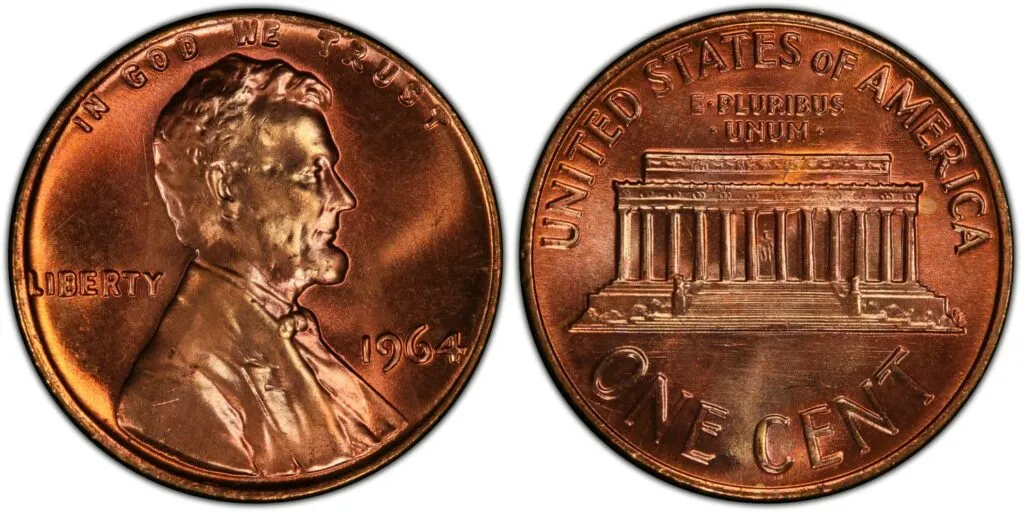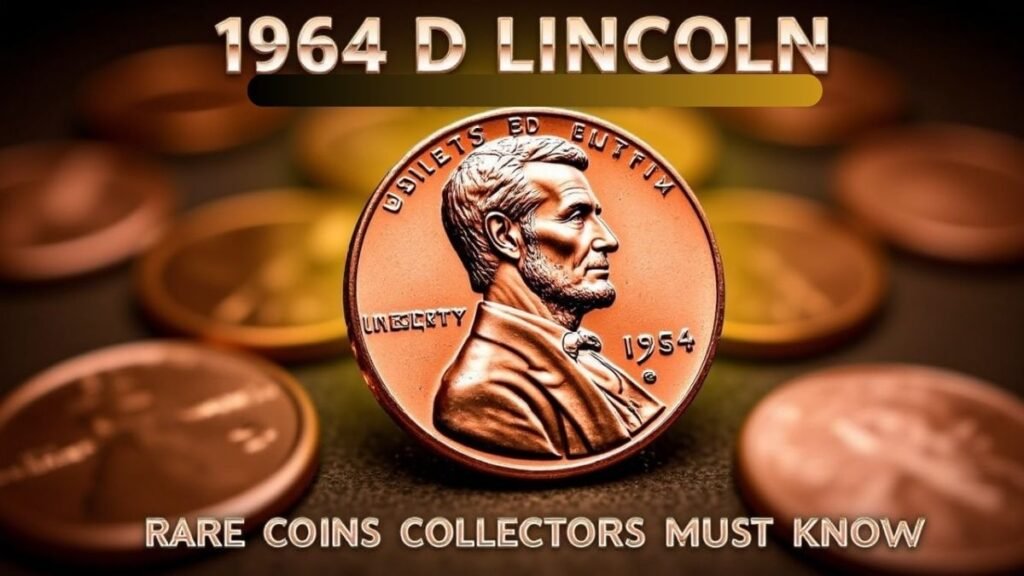The 1964-D Lincoln Penny Errors: Within the world of collecting the 1964-D Lincoln Penny stands as a key coin. Historical value combines with invisible printing defects to create extraordinary coin value in this collection. Coin enthusiasts of all expertise levels need to comprehend the printing flaws of these rare coins to accurately assess valuative value.
1964-D Lincoln Penny
Denver minted this Lincoln Cent as part of the Lincoln Cent series that first came out in 1909. Millions of 1964-D Lincoln Penny coins were minted, but certain printing errors after production made some examples incredibly valuable to collectors.
Common Printing Errors in 1964-D Lincoln Penny
Repunched Mint Mark (RPM)
This flaw occurs when the mint mark is hammered more than once and in inconsistent positions, causing a doubling effect. In the 1964-D penny, this results in a second “D” appearing near the main mint mark.
Off-Center Strike
This is when the coin is not well aligned, making the design move off the center of the coin. Depending on the extent to which this happens, coins that have greater deviations are more valuable.
Stamped on the Wrong Plancket
Sometimes, a penny is stamped on a plancket that is already set for a coin of a different denomination such as a dime. This occurs rarely and those coins can be identified by variations in their weights and sizes.
Die Cracks and Cudds
Die cracks develop when cracks start to form within the die. These cracks manifest as lines on the surface of the coin. When a section of the die breaks off entirely, it is referred to as a “cud,” an area on the coin that appears raised and is not hammered.
Broadstrike Error
Broadstrike occurs when a coin is minted without the retaining collar, causing it to stretch out into an irregular shape but still reflect all design features.
Coins with Printing Defects

The price of a 1964-D Lincoln cent varies depending on several factors:
- Kind of defect: Some defects are more frequent than others. Their beauty and, consequently, price is influenced.
- How noticeable or serious the flaw is: In general, flaws that are obvious carry more money.
- Condition of the coin: Coins in better condition (such as uncirculated) are worth more. For example, a 1964-D penny with a heavy RPM, if it remains in uncirculated, can be worth more than a coin with a light die crack.
How to Identify the Real Deal
To identify an authentic printing flaw of a 1964-D Lincoln penny:
- Use reliable references: Use numismatic guides and databases that note known flaws for this coin.
- Seek professional grading: Have organizations like the Professional Coin Grading Service (PCGS) authenticate and grade the coin.
- Compare with certified examples: Look at coins with certified flaws and understand what makes them strange.
Conclusion
Understanding the hidden flaws in 1964-D printing of Lincoln cents can be the most thrilling collection experience for its collectors. Learning and identifying them will give value to your research, making one understand not just the history it holds but what it’s truly worth.
FAQ’s
Q. Do all 1964-D Lincoln pennies have printing defects?
A. No, not all coins are defective. Rare printing defects can be seen on a few coins that fetch them more values.
Q. Does a 1964-D Lincoln penny containing RPM defects possess higher value?
A. Yes, coins with RPM are usually more valuable, especially if they are of high quality.
Q. Can I identify a coin’s authenticity at home?
A. You can inspect the coin from home, though it would really be better examined by a numismatic expert, who is professional and certified for the task.




